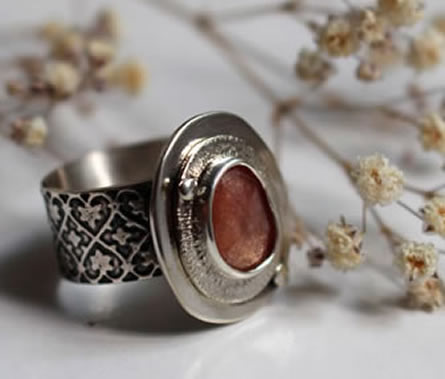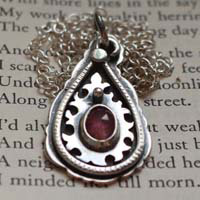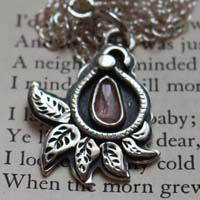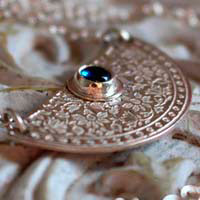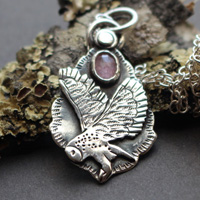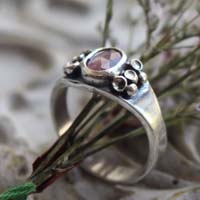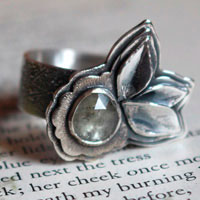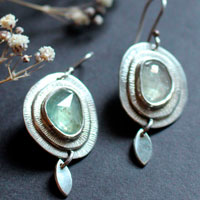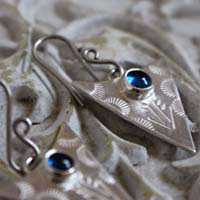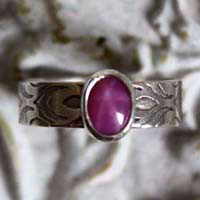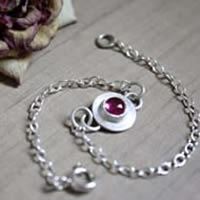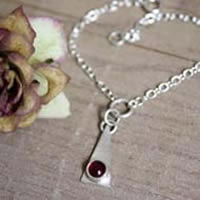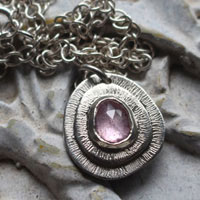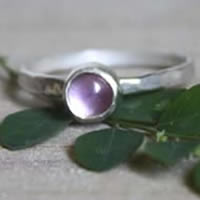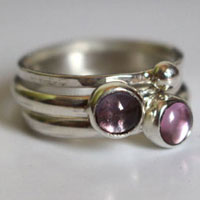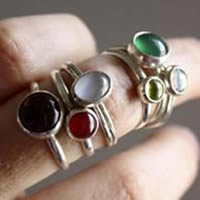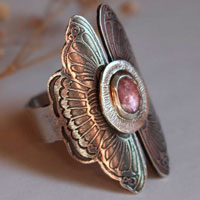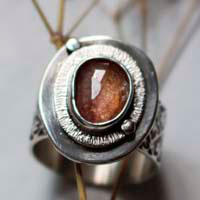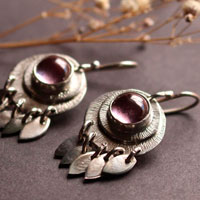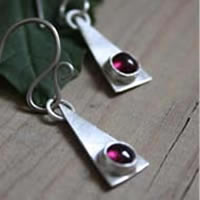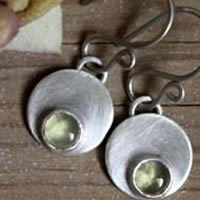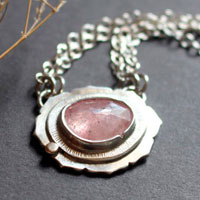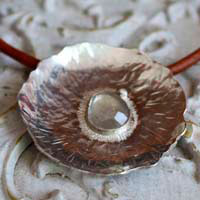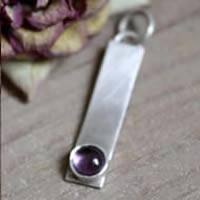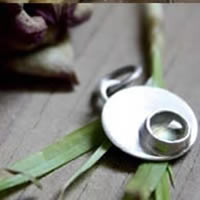- Jewelry
- Inspiration
- Our imagination
- Birthstones
- Celebrating with Eternal Flowers
- Druids and druidesses
- Flower meanings
- History, archeology jewelry
- History and healing properties of metals
- History and healing properties of stone
- Illumination jewelry
- Japanese symbols
- Maya calendar jewelry
- Stone color symbolism
- Stones catalogue
- Wedding anniversaries
- Searches a theme on the site
- Good Deals
- Paintings
- About
- Contact
JEWELRY
- Anklet
- Bracelets
- Brooches
- Cufflinks
- Earrings
- Pendants & Necklaces
- Rings
- Draw your jewelry
- How to clean your jewel
- Metal we used
INSPIRATION
- Our imagination
- Birthstones
- Celebrating with Eternal Flowers
- Druids and druidesses
- Flower meanings
- History, archeology jewelry
- History and healing properties of metals
- History and healing properties stones
- Illumination jewelry
- Japanese symbols
- Maya calendar jewelry
- Stone color symbolism
- Stones Catalogue
- Wedding anniversaries
- Searches a theme on the site
Sapphire: history, healing properties and lithotherapy

Sapphire properties

Sapphire, one of the four precious gemstones (along with diamond, ruby, and emerald), is a variety of corundum (aluminum oxide) that comes in multiple colors, except for red, which is classified as ruby.
This gemstone, the second hardest after diamond, is highly valued for its beauty and durability. Its hardness is rated 9 out of 10 on the Mohs scale, making it extremely resistant to scratches and wear. In addition to its hardness, sapphire has excellent chemical stability: it is resistant to acids and high temperatures, making it suitable for advanced industrial applications. It is also one of the most anisotropic minerals, meaning its color can change depending on the viewing angle.
Sapphire belongs to the trigonal crystal system and typically crystallizes in hexagonal prisms or flattened tabular forms. It forms in various geological environments, particularly in aluminum-rich metamorphic rocks (such as marbles) and basalts. Some sapphires originate from alluvial deposits, where they are extracted after millennia of erosion of their parent rocks.
The name "sapphire" has origins in multiple ancient languages, reflecting the long-standing fascination and significance of this precious gemstone across cultures and civilizations. In Greek, the term "sappheiros" means "blue-colored stone," emphasizing the characteristic hue of sapphire. This deep, mesmerizing blue has always been one of its most admired features. In Hebrew, the word "sappir" translates to "the most beautiful thing," highlighting the gemstone’s rarity and allure. Some linguists suggest a Sanskrit origin for the name "sapphire," from "Santi Priya," meaning "dear to Saturn." This connection aligns with the Indian belief that sapphire is sacred to this planet. In Vedic tradition, Saturn is associated with wisdom, discipline, and justice—qualities also attributed to sapphire.
Until the 13th century, lapis lazuli, with its deep and vibrant blue hue, was often mistaken for sapphire, known as "sappheiros," leading to numerous identification errors throughout history. This confusion was primarily due to the color similarity between the two precious stones. However, the Greeks, renowned for their keen observation and appreciation of gemstones, were well aware of sapphire. They referred to it as "huakintos," in reference to the bluish-purple iris, highlighting the delicate shades of this remarkable gem. It was not until the early 19th century, with advancements in gemology and mineral identification, that sapphire was correctly distinguished from lapis lazuli and classified as a variety of corundum.
Sapphire is sometimes referred to as an "oriental gem," but historically, it has been given various misleading names, such as "oriental peridot" for green sapphire varieties. Generally, the term "sapphire" evokes blue corundum, but this precious gemstone also comes in a range of colors, including pink, yellow, orange, violet, green, black, and colorless. While blue sapphire has been the most famous and coveted throughout history, other variations deserve attention. Among them, the Padparadscha sapphire, displaying a pinkish-violet or pinkish-orange hue, is particularly rare and highly prized.
The different shades of sapphire result from trace elements incorporated into the corundum structure. For instance, the presence of iron and titanium produces the blue color, while vanadium causes the violet hue. Yellow results from varying iron concentrations and can even shift towards green. Some sapphires exhibit unique optical phenomena:
- Asterism: Certain sapphires, known as "star sapphires," display a six-rayed star under light. This effect is caused by needle-like rutile inclusions aligned with the crystal structure.
- Color change: Some rare sapphires, called "alexandrite-like sapphires," shift in color depending on the light source, transitioning from blue or green in daylight to violet or red under incandescent lighting.
Since ancient times, sapphires have undergone various treatments to enhance their color and clarity. The most common method is heat treatment, which intensifies color and reduces inclusions. Some sapphires are also treated with titanium diffusion to enhance their blue hue. Additionally, certain sapphires are glass-filled or treated with beryllium to achieve unique shades.
Since the early 20th century, synthetic sapphires have been produced in laboratories. In 1902, French chemist Auguste Verneuil developed the first synthesis process. These synthetic sapphires are chemically and physically identical to their natural counterparts. Their exceptional scratch resistance makes them ideal for watch crystals, camera lenses, lasers, bulletproof windows, and ballistic armor.
The world’s major sapphire deposits are found in Sri Lanka, Myanmar (Burma), Madagascar, Thailand, and Australia. Each source produces sapphires with distinct characteristics. For example, Kashmir sapphires are renowned for their unique velvety blue, while those from Madagascar display an exceptionally diverse range of colors.
Mines: Madagascar, Sri Lanka, Burma, China, India, Brazil, Thailand, the USA, Canada, Australia, Tanzania, Cambodia and Vietnam.
History, legends and beliefs about sapphire
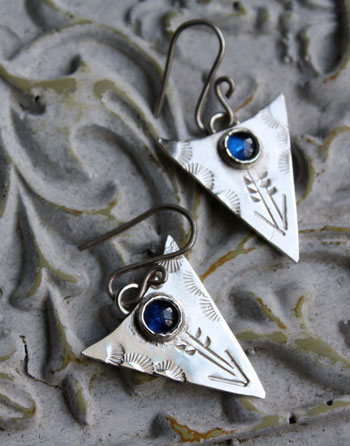
As previously mentioned, most legends and beliefs are associated with blue sapphire, as it was the only recognized and known variety at the time. However, it is important to note that sapphire exists in a much wider range of colors, each with its own meanings and associated beliefs.
The Persians, a people rich in culture and spirituality, attributed profound significance to sapphire. They believed that the earth rested upon a massive sapphire, whose blue reflections were responsible for the color of the sky. This belief illustrates their deep reverence for this precious stone, which they considered a symbol of purity and divinity.
For them, sapphire represented a connection between the heavens and the earth, a symbol of the link between humanity and the divine. The blue reflections of sapphire were seen as a manifestation of celestial presence, a testament to the perfection of creation.
Sapphire was also associated with wisdom and knowledge. It was believed to possess the power to reveal truth and guide its wearer toward clarity of mind and understanding. For this reason, sapphire amulets and talismans were commonly used to ward off negative influences and attract divine blessings.
In Persian royal traditions, sapphire adorned the crowns and jewelry of monarchs, symbolizing justice, authority, and divine protection. It was believed to enable rulers to govern with wisdom and fairness, reinforcing their connection to celestial will.
Ancient Persian texts also mention the use of sapphire in medicine. Ground into powder and mixed with various elixirs, it was used to treat certain ailments, particularly vision disorders and nervous imbalances. This belief in its healing properties spread across different civilizations, influencing both therapeutic and spiritual practices in many cultures.
Sapphire played an important role in the culture and spirituality of ancient Egypt. The ancient Egyptians revered this stone as a symbol of truth, justice, and divine protection. They firmly believed in its power to reveal truth, guide rulers toward fairness, and ward off harmful influences.
In Egyptian mythology, sapphire was often associated with Ma’at, the goddess of truth, order, and justice. This deity governed the balance of the world and presided over the judgment of souls in the afterlife. Ma’at was frequently depicted with a sapphire-blue feather on her head, though some later traditions also mention the use of precious stones in her honor. Due to its clarity and hardness, sapphire was seen as an embodiment of the purity and solidity of divine laws.
The Egyptians used sapphire to adorn the jewelry of high-ranking officials and pharaohs, considering it a talisman capable of attracting wisdom and divine protection. Some artifacts discovered in royal tombs suggest that sapphire was sometimes set in amulets or priestly rings. These objects, often encased in gold or other precious stones, served to ensure a privileged connection between their wearer and the gods.
As part of funerary rites, sapphire was sometimes placed alongside the deceased to ensure a peaceful transition to the afterlife. This gemstone was believed to illuminate the path of the departed and offer protection against divine judges. Some sarcophagi featured inscriptions or decorations in sapphire or similar stones, reinforcing the symbolism of justice and truth in the journey to the realm of the dead.
Beyond its religious and spiritual use, sapphire was also highly valued in Egyptian craftsmanship. Blue stone scarabs, sometimes identified as sapphire or lapis lazuli, were carved with protective inscriptions and worn as amulets. These talismans, widespread in Egyptian culture, symbolized rebirth and divine protection.
Through its brilliance and rarity, sapphire was much more than a mere gemstone to the Egyptians. It embodied a link between the divine and the earthly, a key to truth, and a shield against the forces of chaos.
Sapphire captivated the Greeks as early as 480 BCE when they discovered this precious stone, primarily imported from Sri Lanka. Admired for its deep blue color and brilliance reminiscent of the sky and the Aegean Sea, sapphire quickly became associated with celestial deities and the quest for truth.
According to legend, Prometheus, the Titan who brought fire to mankind, also stole sapphire from the gods, considering it a symbol of wisdom and divine knowledge. This myth reinforced the idea that sapphire possessed a sacred power, an energy capable of illuminating the human mind and bringing it closer to the divine.
The Greeks, known for their veneration of the gods and their reliance on oracles, often wore sapphire when visiting the Oracle of Apollo at Delphi. They believed that this gemstone would help them better understand the responses of the Pythia, the priestess who conveyed Apollo’s prophecies. Sapphire, which they called the "jewel of the sun god," was thought to capture and amplify divine light, enabling worshippers to perceive divine messages with greater clarity.
In Apollo’s temples, certain priests and seers wore rings adorned with sapphires, believing that the stone granted them sharper vision and a keen intellect, allowing them to interpret divine signs and avoid deception.
Sapphire was also highly valued by Greek philosophers, who saw it as a representation of pure and unalterable knowledge. It symbolized the pursuit of truth and universal harmony, ideals cherished by the thinkers of the time. Some considered it a stone of balance, helping the soul rise above earthly illusions to attain a state of higher wisdom.
Astrologically, the Greeks associated sapphire with Zeus, king of the gods, and his ability to rule with discernment and justice. They believed that wearing a sapphire could attract the favor of the gods and provide divine protection against negative energies and curses.
Due to its importance in Greek spirituality and philosophy, sapphire was often used to adorn ritual objects, priests’ jewelry, and even statues of deities. It embodied the connection between humanity and celestial forces, serving as a guide to truth and eternal wisdom.
Sapphire holds a prominent place in sacred texts and religious traditions. In the Bible, it is mentioned multiple times as a symbol of purity, wisdom, and divine protection. Its blue color evokes the heavens and proximity to God, reinforcing its sacred nature.
In Exodus (24:10), sapphire is described as part of God’s throne: "They saw the God of Israel, and under his feet was something like a pavement made of sapphire, as clear as the sky itself." This vision strengthens the association of sapphire with celestial purity and divine presence. Some theologians have interpreted this description as an image of the connection between the divine and humanity, with sapphire serving as a spiritual bridge.
Sapphire is also one of the twelve gemstones adorning the breastplate of Aaron, the high priest of Israel, who wore this sacred ornament to represent the twelve tribes of Israel (Exodus 28:18). According to tradition, the stone associated with the tribe of Issachar was sapphire, symbolizing knowledge and wisdom. This gem was believed to help the priest communicate with God and discern His will.
In the Book of Revelation (21:19), sapphire is one of the precious stones forming the foundations of the heavenly Jerusalem: "The second foundation was of sapphire..." This reference highlights the perfection and holiness of the divine city, where sapphire represents divine wisdom and the eternity of the celestial kingdom.
According to Jewish tradition, the tablets of the Law given to Moses on Mount Sinai were carved from sapphire, although other sources suggest they may have been made of lapis lazuli. This detail illustrates the great spiritual value attributed to this stone, seen as a direct link to divine commandments.
Sapphire is also linked to King Solomon, renowned for his wisdom and discernment. He is said to have possessed a magical sapphire ring, known as the "Seal of Solomon." This ring was believed to grant him the power to command spirits, understand the language of animals, and exercise fair judgment. In some versions of the legend, he used this talisman to win the favor of the Queen of Sheba, emphasizing the mystical power and allure of sapphire.
The patriarch Abraham, according to certain traditions, wore a sapphire around his neck as a talisman symbolizing his faith and connection with God. This sapphire was said to have been passed down through generations as a sign of divine blessing.
Blue sapphire, with its celestial color and luminous quality evoking the divine realm, is a highly significant symbol for the Catholic Church. Associated with purity, faith, and devotion, it has been used in religious ornaments and the insignia of ecclesiastical dignitaries since the Middle Ages.
As early as the 13th century, cardinals wore a sapphire-adorned ring on their right hand, the one used for blessings, as a symbol of their fidelity and closeness to God. It was believed that sapphire reinforced the sincerity of their words and prevented corruption, making it an ideal emblem for those in spiritual leadership.
Pope Innocent III, in the 13th century, even decreed that episcopal rings should be adorned with sapphire, as it symbolized chastity and divine contemplation. This tradition endured through the centuries, reinforcing sapphire’s association with religious authority and spiritual wisdom.
A famous story linked to sapphire is that of the "Talisman of Charlemagne." Charlemagne is said to have possessed a blue sapphire pendant given to him by the Abbasid Caliph Harun al-Rashid. This pendant, which contained holy relics, was worn by the emperor as an amulet symbolizing his devotion to God and his quest for divine protection. After his death, legend holds that the talisman was placed in his tomb and rediscovered in the 11th century by Emperor Otto III, who had it enshrined in a sacred reliquary. This story illustrates the medieval belief in the spiritual power of sapphire.
Sapphire, with its deep blue hue and rarity, has always been a symbol of prestige and power. In royal and aristocratic circles, it was worn by kings, queens, and nobility not only for its beauty but also for its symbolic significance.
In Europe, particularly in France, blue sapphire is closely associated with royalty. This connection dates back to the Capetian dynasty, where blue was an expensive and rare color, symbolizing prosperity, wisdom, and the high status of the nobility. French kings and queens frequently adorned themselves with sapphire-encrusted jewelry—crowns, diadems, and brooches—to emphasize their rank and authority.
During the Middle Ages, sapphire was far more than a prestigious ornament. It was revered for its protective and healing powers and was often worn as a talisman or amulet. Monarchs and nobles believed that this precious stone could shield them from curses, poisons, and malevolent forces.
Some beliefs held that sapphires embedded in royal crowns and scepters enhanced the sovereign’s divine power and protected them from conspiracies. This idea was rooted in the concept of the "divine right of kings," where the ruler was seen as chosen by God.
Sapphire was also reputed to preserve chastity and reveal fraud and betrayal. It was believed that a person guilty of infidelity or deceit could not withstand its brilliance. Some accounts claim that the sapphire would change color or lose its luster when worn by someone with an impure heart. This belief was so widespread that sapphire was sometimes used as a test stone to determine the sincerity of oaths and the fidelity of alliances. Knights and nobles often gifted sapphire-set rings to their spouses or allies to ensure their loyalty. It was said that if love or faithfulness was betrayed, the sapphire would lose its brilliance or shift in hue, thus exposing deception.
In the Middle Ages, sapphire held a prominent place not only in religious contexts but also in esoteric and alchemical studies. Medieval alchemists saw this gemstone as a symbolic key in their quest for transmutation, not only of metals but also of the human soul. Sapphire, with its purity and radiance, was associated with divine wisdom and spiritual elevation. It was sometimes ground into fine powder and incorporated into elixirs believed to purify both body and mind, reinforcing its connection to the ideal of alchemical perfection.
Some alchemical treatises depicted sapphire as an intermediary between the earthly and celestial realms, emphasizing its role in the pursuit of the philosopher’s stone. It was perceived as a catalyst for inner transformation, helping the alchemist transcend imperfections to attain ultimate knowledge. Furthermore, its blue color, linked to the firmament, reinforced its symbolism as a guide to higher truths and a connection to the divine.
Medieval manuscripts also describe sapphire as a stone with protective virtues against both physical and spiritual harmful influences. Some alchemists wore sapphire-adorned rings to shield themselves from evil spirits and negative energies that could hinder their work. Additionally, within alchemical medicine, sapphire was believed to purify the blood and strengthen vitality, making it particularly prized in the preparation of therapeutic elixirs.
In the Islamic world, sapphire was a highly esteemed gemstone, valued both for its beauty and its supposed spiritual and protective properties. It is mentioned in various Islamic traditions as a gem associated with wisdom and clairvoyance, helping its wearer make enlightened decisions. Its brilliance and deep color made it a symbol of knowledge and piety, often compared to the vastness of the sky and the grandeur of divine creation.
Many Muslim rulers, particularly within the Abbasid, Umayyad, Persian, and Ottoman dynasties, owned sapphire jewelry, including rings engraved with Quranic verses. These rings served a dual purpose: they functioned as official seals for authenticating documents and correspondence while also being used as protective talismans. It was believed that sapphire, due to its purity, strengthened one’s connection to the divine and shielded its wearer from harmful influences and enemy conspiracies.
In Persian culture, sapphire was often associated with royalty and justice. Safavid and Qajar rulers adorned their crowns and symbols of power with this gemstone, considering it a token of balance and foresight in governance. Some accounts suggest that sapphires were also used in rituals for protection and spiritual elevation, often in the form of amulets worn by scholars and Sufi mystics.
Finally, in Islamic architecture, sapphire’s deep blue hue often inspired the decoration of mosques and palaces, evoking spirituality and infinity. Sapphire-colored ceramics and blue mosaics in iconic sites, such as the Dome of the Rock in Jerusalem and the Shah Mosque in Isfahan, reflect this influence, where the stone’s symbolism was transposed into art and ornamentation.
Sapphire was particularly revered in Asian countries, where it played a significant role in religious beliefs and practices, especially in Buddhism. This precious gemstone, with its deep and mesmerizing blue color, is considered sacred and is often associated with wisdom, purity, and truth.
Buddhists believe that sapphire has the power to stimulate the desire for prayer and meditation, aiding in the attainment of a higher state of consciousness. The stone is said to bring inner peace, happiness, and serenity to those who wear or possess it. In Buddhist temples, sapphires were sometimes embedded in statues or sacred objects to amplify their spiritual energy and enhance the focus of devotees.
In Buddhist tradition, sapphire is also linked to compassion and benevolence—essential qualities for attaining enlightenment. By wearing or meditating with this stone, practitioners hope to cultivate these virtues and progress on the path to spiritual awakening. Some teachings claim that sapphire helps to calm the mind and dispel illusions, reinforcing the mental clarity necessary for meditation.
Moreover, in India, where sapphire is also highly valued, it is associated with Saturn (Shani) in Vedic astrology. Blue sapphire, known as Neelam in Sanskrit, is considered a stone of discipline, karma, and spiritual transformation. According to tradition, it grants protection and prosperity to those who wear it with humility, but it can be formidable for those unprepared to face Saturn’s lessons.
In Asian cultures, some legends recount that sages and ascetics wore sapphires to protect themselves from negative influences and external disturbances. In China, the stone was also regarded as a shield against malevolent spirits and a symbol of divine justice.
Sapphire, with its timeless beauty and deep symbolism, has become a favored choice for engagement and wedding rings, representing integrity, sincere love, and enduring fidelity. This tradition has historical roots, as sapphire was long considered a stone of truth and loyalty, believed to preserve the bond between two individuals.
Its association with royalty was further reinforced by European monarchs who wore sapphires as symbols of wisdom and divine protection. As early as the Middle Ages, this precious stone adorned crowns, scepters, and royal ornaments, as it was believed to bring clarity and justice to rulers. It was also said that sapphire could change color if worn by an unfaithful person, enhancing its role as a talisman for couples.
One of the most famous examples of sapphire’s influence in royal engagements is the ring given by Prince Charles to Lady Diana in 1981. This jewel, featuring a 12-carat blue sapphire surrounded by diamonds, became iconic, capturing the public imagination and influencing jewelry trends for decades. Its design, inspired by British crown jewels, lent it a timeless elegance, reinforcing sapphire’s prestige as a symbol of love and nobility.
Over the years, fascination with this gemstone has not waned. When Prince William proposed to Kate Middleton with the same ring in 2010, sapphire once again sparked global enthusiasm, confirming its status as an exceptional choice for engagement rings. Its deep luster and rarity make it a refined selection for those seeking a piece of jewelry that is both elegant and meaningful.
Beyond royal families, many celebrities and influential figures have also chosen sapphire to symbolize their commitment. Its intense blue, often associated with the sky and eternity, evokes sincere and lasting love, making it a cherished gemstone for couples worldwide.
Sapphire has long been linked to enduring love and loyalty, making it a prized gift for celebrating wedding anniversaries. Traditionally, it marks the 5th wedding anniversary, symbolizing the strengthening of the marital bond, as well as the 45th, representing the depth of commitment and the resilience of a couple after decades together. This tradition dates back to the 19th century when associating gemstones with specific marriage milestones became common in Europe and the United States.
Sapphire is also the birthstone for September, a tradition rooted in antiquity, particularly in the astrological and religious practices of the Near East and medieval Europe. In some cultures, it is associated with those born in this month as a symbol of wisdom, protection, and prosperity. It is believed to bring them mental clarity and safeguard them from negative energies.
Famous sapphires
Sapphires, these exceptionally rare gemstones, have always been surrounded by mysteries and legends. Among the most famous are:
The Black Star of Queensland: This extraordinary star sapphire, weighing 733 carats after cutting, is not only the largest known star sapphire but also one of the most impressive due to the quality of its asterism. The six-rayed star effect that appears under direct light is caused by needle-like rutile inclusions, which scatter light in a unique way.
The 1,156-carat rough stone was discovered in 1938 in Queensland, Australia, by a young boy playing near a mine. He brought the dark rock home to his family, who initially overlooked its true value, assuming it was just an ordinary stone. It was only later that a gemology expert recognized its exceptional nature and undertook its cutting to reveal the sapphire’s spectacular asterism.
The Black Star of Queensland is set on a white gold base adorned with 35 diamonds, an arrangement that enhances its mysterious brilliance. It has been exhibited in several prestigious museums, including the Smithsonian Institution in the United States, drawing the attention of gem enthusiasts and collectors. However, it was later sold to a private collector, and since 2007, it has not been publicly displayed, fueling speculation about its current owner and exact location.
Beyond its size and brilliance, this sapphire is also intriguing for its color: though often described as black, it actually exhibits deep charcoal gray tones, sometimes reflecting dark blue hues under certain lighting conditions. This unusual shade, combined with its immense weight and enigmatic history, cements its legendary status among precious gemstones.
The Grand Sapphire of Louis XIV is an exceptional gem distinguished by its deep blue hue and unusual shape. Weighing 135.8 carats, it takes the form of a natural six-sided crystal, whose perfectly rhomboidal structure showcases rare geometric perfection. Unlike many other crown jewels that were recut to maximize their brilliance, this sapphire was preserved in its near-raw form, further enhancing its uniqueness.
Acquired by Louis XIV in 1669 from jeweler Jean-Baptiste Tavernier, this jewel originates from Sri Lanka, an island renowned since antiquity for its high-quality sapphires. Tavernier, famous for his travels to the East in search of precious stones, is said to have personally selected this gem from the treasures of sultans and maharajas. Its purchase reflects the king’s passion for exotic and rare gemstones, as well as his ambition to build a collection rivaling those of the greatest European courts.
The Grand Sapphire of Louis XIV was integrated into the royal collections and preserved among the French Crown Jewels. Unlike many other pieces that were dispersed or melted down during the turmoil of the French Revolution, it survived unscathed. Today, it is displayed at the National Museum of Natural History in Paris, where it continues to captivate gemology enthusiasts and historians fascinated by its journey through the centuries.
Beyond its historical significance, this sapphire is also remarkable from a gemological perspective. Its intense blue color, caused by traces of iron and titanium, along with its exceptional transparency, make it one of the finest specimens of an uncut natural sapphire in the world. Its state of preservation and authenticity make it an invaluable witness to the history of precious stones and the French monarchy’s appreciation for rare and spectacular gems.
Edward the Confessor’s Sapphire is one of the oldest and most historically significant gemstones among the British Crown Jewels. According to tradition, this sapphire once belonged to the Anglo-Saxon King Edward the Confessor, who ruled England from 1042 to 1066. It is said to have been set in a ring that the sovereign wore during his coronation in 1043.
Legend has it that Edward originally gave this sapphire to a beggar disguised as a pilgrim, who later revealed himself to be Saint John the Evangelist. Years later, while on a pilgrimage to the Holy Land, the king is said to have encountered the same figure, who returned the ring to him and foretold that he would soon enter paradise. This story contributed to the gem’s enduring reputation as a symbol of holiness and divine protection.
In 1161, when Pope Alexander III canonized Edward the Confessor, his body was exhumed from Westminster Abbey, where he had been buried in 1066. It was during this event that his ring was recovered and incorporated into the royal treasury.
For centuries, Edward’s sapphire was set in various crowns, symbolizing the continuity of royal power and the divine blessing bestowed upon English monarchs. However, during the English Civil War in 1649, Oliver Cromwell ordered the destruction of the Crown Jewels. Many pieces were dismantled, melted down, or sold. The sapphire, however, survived this turbulent period and was recut in 1660 following the restoration of the monarchy under Charles II.
In 1838, under the reign of Queen Victoria, the sapphire was once again given prominence when it was set in the cross pattee of the Imperial State Crown, further enriching its storied history. Since then, this gemstone has accompanied every royal coronation, marking the resilience and continuity of the British monarchy.
Today, Edward the Confessor’s Sapphire remains a symbol of royal heritage and spiritual protection. Its place on the Imperial State Crown secures its status as one of the most prestigious jewels in the world.
The Commoner’s Sapphire, despite its association with the British royal family, earned its nickname because it originated from a publicly accessible jewelry collection rather than being a custom royal commission. This iconic engagement ring features a 12-carat Ceylon sapphire, oval-cut and surrounded by 14 diamonds, all set in 18-carat white gold.
The ring was chosen in 1981 by Princess Diana from several designs presented by Garrard, the official jeweler of the British Crown. Unlike royal traditions, which favored custom-made pieces, Diana selected this catalog design, reinforcing her image as a "people’s princess." Her choice caused a sensation, as the royal family would have preferred a unique, bespoke piece. However, it ultimately helped make the ring one of the most recognizable royal jewels in the world.
The sapphire, with its deep and intense blue hue, comes from the famed mines of Sri Lanka (formerly Ceylon), a region renowned for producing sapphires of exceptional quality. For centuries, the island has supplied royal courts worldwide with precious stones celebrated for their vibrant colors and remarkable clarity.
After Princess Diana’s tragic death in 1997, the ring was inherited by Prince Harry, who later gifted it to his brother, Prince William. In 2010, William chose it to propose to Kate Middleton, a decision seen as a touching tribute to their mother. This deeply symbolic act further enhanced the emotional and historical significance of the jewel.
Now worn by Kate Middleton, Princess of Wales, the ring continues to captivate the public, serving as a powerful emblem of continuity and tradition within the British monarchy. Its timeless elegance and rich history have inspired countless replicas, solidifying its influence in the world of fine jewelry.
The Logan Sapphire is a gemstone of exceptional rarity, captivating the world of jewelry since its discovery. Weighing 423 carats (equivalent to 84.6 grams), it stands out not only for its monumental size but also for its intense blue color, which gives it a unique brilliance. Cut in a cushion shape, it is set in a brooch surrounded by 20 diamonds with a total weight of 16 carats, enhancing its radiance and magnificence.
Originating from the famed mines of Sri Lanka, this sapphire was discovered in the 1960s, a time when the unearthing of gemstones of such extraordinary size was particularly rare. In 1969, the gem was generously donated by Mrs. John A. Logan to the Smithsonian National Museum of Natural History, where it has been on display ever since.
The Logan Sapphire is recognized as one of the largest faceted sapphires in the world. It is admired not only for the depth of its color and its exceptional clarity but also for its fascinating history. Beyond its impressive dimensions, its Sri Lankan origin—an island legendary for its sapphires—adds a mythical aura to its prestige.
The gemstone was named after its donor, Mrs. John A. Logan, whose initiative in offering this rare piece to the museum elevated its status as an invaluable treasure. Since its exhibition, the Logan Sapphire has become one of the most visited and admired jewels at the Smithsonian, attracting thousands of visitors each year.
Its history is also part of a broader legacy of generosity, as this donation ensured the preservation of the gemstone for posterity, inspiring generations of gem enthusiasts and history lovers. The Logan Sapphire remains a symbol of luxury, refinement, and timeless beauty, a true treasure of both the natural and cultural world.
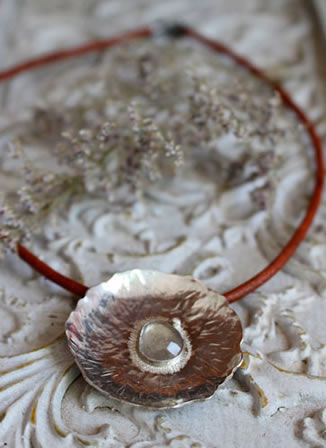
The Nertamphia Sapphire is an exceptionally rare gemstone, discovered in 2016 in a sapphire mine in Myanmar. Weighing 216 carats, it ranks among the largest sapphire gemstones ever found, making it a gem of inestimable value. This sapphire is distinguished by its deep blue color and remarkable clarity, characteristics typical of the finest sapphires from Myanmar’s legendary mines.
The stone was named after King Nertamphia, a legendary ruler of the ancient Pagan Kingdom, which flourished in what is now Myanmar during the 9th century. This name was chosen to honor the majesty and historical significance of this king, whose realm was a flourishing center of culture and the arts. It also pays tribute to Myanmar’s rich history, particularly its sapphire mines, which have produced some of the world’s most coveted gemstones.
The discovery of the Nertamphia Sapphire captivated the gemological world, as it came at a time when the production of sapphires of such size and quality was becoming increasingly rare. While Burmese mines have historically yielded some of the most valuable gemstones, this particular find drew exceptional attention from collectors and experts due to its impressive size and historical resonance.
The sapphire immediately generated intense interest in the international market, with multiple private collectors and museums making acquisition offers. However, due to its historical significance and extreme rarity, its current whereabouts and future ownership remain undisclosed, adding an air of mystery and prestige to this extraordinary gemstone.
The Rockefeller Sapphire is a gemstone of extraordinary rarity and beauty. Acquired in 1934 by John D. Rockefeller, one of the wealthiest and most influential men of his time, this sapphire has a fascinating history and intriguing provenance. According to available records, Rockefeller purchased it from an Indian maharaja, possibly Mir Osman Ali Khan, the last Nizam of Hyderabad, who was renowned as one of the greatest gemstone collectors of his era. This royal provenance and its connection to India add an element of exoticism and mystery, further enhancing its symbolic and historical value.
The Rockefeller Sapphire is renowned for its deep, intense blue hue, with perfect saturation, making it one of the most sought-after stones among collectors and gemologists. Weighing 62.02 carats, it is also of an impressive size, placing it among the most prestigious sapphires in history, a perfect combination of beauty and rarity.
Cut in a rectangular emerald shape, the sapphire’s faceting enhances both its color and brilliance. This cut allows light to penetrate and reflect through the stone in a way that maximizes its natural radiance. Mounted on a ring adorned with diamonds, the Rockefeller Sapphire is framed in a setting that further accentuates its brilliance and luxurious appeal. This ring was designed to stand as a timeless masterpiece, embodying both social status and refined elegance.
he prestige of this sapphire has only grown over the decades. In 1988, it was auctioned by Sotheby’s for an impressive $2,820,000. Later, in 2001, it was resold by Christie’s for $3,031,000, demonstrating its continual appreciation in value. This remarkable price evolution reflects the growing demand for high-quality sapphires and the enduring allure of gemstones with such a significant history.
The Star of Bombay, also known as the Étoile de Bombay, is a gemstone of extraordinary beauty and rarity. Originating from Sri Lanka, this gem is one of the most spectacular examples of a star sapphire. Weighing 182 carats (approximately 36.4 grams), it ranks among the largest sapphire gemstones ever discovered and remains one of the most famous and captivating jewels in the world.
Its history is as remarkable as its size. The Star of Bombay was gifted by Douglas Fairbanks, a Hollywood legend, to his wife, Mary Pickford, who was known as the "Queen of Hollywood" during the silent film era. Fairbanks’ romantic and symbolic gesture contributed to the sapphire’s growing fame. After Mary Pickford’s death in 1979, the gemstone was bequeathed to the Smithsonian Institution in Washington, D.C., where it is now exhibited, fascinating visitors with its storied past and radiant beauty.
The Star of Bombay is a violet-blue star sapphire, meaning it displays a six-rayed star when light strikes it at the right angle. This rare and spectacular phenomenon is caused by the presence of rutile inclusions within the stone, which create a unique shimmer and chatoyant effect. This striking optical feature is most visible under direct light, making the Star of Bombay a highly prized gemstone among collectors and jewelry enthusiasts.
Due to its distinctive brilliance and captivating history, the Star of Bombay is considered one of the greatest treasures of the Smithsonian and continues to captivate audiences worldwide. Its singular appearance, with its blue-violet hues and mysterious star, makes it an extraordinary example of the natural beauty Earth has to offer.
The Star of India is an exceptionally rare and beautiful gemstone. Originating from Sri Lanka, this star sapphire is one of the largest of its kind, weighing an astonishing 563.35 carats (approximately 112.67 grams). Discovered in a Sri Lankan sapphire mine, it is renowned for its milky grayish-blue hue, which gives it a unique and mesmerizing appearance. This sapphire is often considered a perfect example of the natural beauty of precious stones.
What makes the Star of India even more extraordinary is that it displays a visible star on both sides, a highly rare feature in star sapphires. This star effect is caused by rutile inclusions, which, under specific conditions of cut and orientation, create a striking optical effect. This rarity enhances not only the sapphire’s beauty but also its value and mystique. Most star sapphires exhibit this asterism on just one side, making the Star of India an exceptional specimen.
The Star of India was donated to the American Museum of Natural History by J.P. Morgan, the business magnate and gemstone collector, who played a crucial role in assembling many renowned gem collections. His generous contribution allowed this sapphire to become part of a prestigious collection, cementing its status as a symbol of early 20th-century elite culture.
In 1964, this priceless gem was stolen by Jack Murphy, known as "Murph the Surf", a notorious jewel thief. The theft sent shockwaves through the gem-collecting world. Fortunately, the Star of India was recovered two months later following an extensive investigation and was returned to the museum. This sensational event only added to its fame, making it even more legendary.
Today, the Star of India remains one of the most fascinating jewels in the museum, drawing visitors from around the world. Its tumultuous history and unparalleled beauty continue to intrigue collectors and gemstone enthusiasts, ensuring its place as one of the most celebrated sapphires in history.
The Midnight Star is a gemstone of extraordinary rarity and beauty. Originating from Sri Lanka, this star sapphire is one of the largest of its kind, with an impressive weight of 116 carats. What makes this sapphire particularly remarkable is its unique color, which ranges from violet to black, a rare phenomenon that gives it an enigmatic and captivating allure. The color variation, shifting from a deep violet to nearly black hues, enhances the mystical aura of the stone, capturing light in an extraordinary manner. Depending on the angle of observation, its shade appears to change, adding to its distinctiveness.
The star phenomenon, caused by rutile inclusions, is another rare feature that sets this gem apart from other sapphires. When illuminated, a six-rayed star emerges on the stone’s surface, creating a stunning optical effect. This phenomenon occurs due to the specific arrangement of rutile crystals within the sapphire, producing a mesmerizing play of light that captivates all who gaze upon it.
The Midnight Star was discovered in a Sri Lankan sapphire mine, a region renowned for producing some of the world’s most sought-after gemstones. It is now housed at the Smithsonian Institution in Washington, D.C., where it is part of a prestigious collection and displayed to the public for the delight of gem enthusiasts and collectors. This exceptional sapphire continues to attract admiration for its unparalleled beauty and fascinating history, making it one of the most revered star sapphires in the world of gemology.
The Millennium Sapphire is a gemstone of extraordinary rarity and beauty. Discovered in Madagascar in 1995, it is the largest sapphire ever found, with an astonishing weight of 13 kilograms (approximately 61,500 carats). This titanic sapphire, which defies all expectations in terms of size and beauty, is a true masterpiece of nature. What makes this gemstone even more extraordinary is that it was sculpted by the Italian artist Alessio Boschi into a work of art that celebrates human creativity and genius.
The Millennium Sapphire sculpture is an exceptional artistic achievement, merging the natural beauty of the gem with artistic imagination. Alessio Boschi used his expertise in stone carving to create an intricately detailed representation of historical figures, cultural icons, and pivotal events in human history. Among the personalities depicted are Albert Einstein, Christopher Columbus, Mozart, Rousseau, Newton, Shakespeare, Lao Tzu, Beethoven, Michelangelo, Martin Luther King, and many others. These figures symbolize intelligence, creativity, and the profound influence these individuals have had on the advancement of civilization.
In addition to human figures, the sculpture features great monuments and inventions that have shaped the world, such as the Pyramids of Giza, the Great Wall of China, Gutenberg’s printing press, and other masterpieces of human ingenuity. These representations serve as a testament to humanity’s evolution, from ancient civilizations to modern scientific and cultural revolutions.
In total, the Millennium Sapphire showcases over 134 subjects, an impressive composition that makes it not only an exceptional gemstone but also a true time capsule of history. This unique work of art, crafted with meticulous precision, stands as a magnificent tribute to human vision, art, and history.
Healing properties and benefits of sapphire
Throughout the long history of humanity, people have attributed various properties, virtues and healing beliefs to sapphire. The information presented here is shared from a cultural and historical perspective, in order to illustrate the symbolic relationship that has developed between this stone and different civilizations over the centuries. Like the preceding elements, it is part of our scientific and historical approach. It does not constitute any form of therapeutic or medical recommendation, nor does it reflect our personal beliefs.
- Sapphire is considered a valuable ally for the health of the skin, hair, and nails. It is believed to promote cellular regeneration, helping to maintain healthy and radiant skin, strong hair, and resilient nails. It is thought to stimulate collagen production, contributing to skin elasticity and the prevention of wrinkles. Traditionally, this stone is used in lithotherapy to balance energies and enhance physical appearance.
- Sapphire is renowned for its soothing and anti-inflammatory properties, making it an effective natural remedy for skin conditions such as acne, eczema, psoriasis, and other inflammatory skin issues. It is believed to calm irritations and aid in the regeneration of damaged skin. Moreover, some cultures believe its purifying power helps eliminate toxins and soothe allergic skin reactions.
- Sapphire is also known for its calming and soothing effects on the nervous system. It is said to benefit those suffering from stress, anxiety, or nervous disorders. Wearing this stone may help reduce mental and emotional tension, providing a sense of inner peace. It is often recommended during periods of great agitation or when making important decisions, as it is believed to clear the mind and enhance concentration.
- Due to its sedative properties, sapphire is recognized as a natural remedy for insomnia and dizziness. It is thought to have a soothing effect on the nervous system, promoting deep and restorative sleep. Dizziness, often linked to energy imbalances, can be alleviated through the use of this stone, which is believed to bring stability and equilibrium.
- Sapphire is also reputed for its analgesic properties, making it a natural remedy for various bodily pains. In lithotherapy, it is used to relieve joint pain, rheumatism, gout, colic, heartburn, as well as dental, sinus, and ventricular pain. Traditional healers often recommend wearing or meditating with this stone to ease physical pain and muscle tension.
- Sapphire is known for its benefits on eyesight and eye health. In lithotherapy traditions, it is considered an excellent aid for strengthening the eyes, improving visual clarity, and preventing ocular disorders. Some believe it protects against eye strain and vision problems caused by excessive screen use. It is also used to treat eye inflammation.
- Sapphire is valued for its anti-inflammatory and healing properties. This precious stone is believed to reduce the appearance of tumors and promote ulcer healing, particularly by regenerating tissues. In lithotherapy, it is also reputed to stop internal and external hemorrhages, thus accelerating the healing process. Sapphire is therefore seen as a valuable ally in supporting the recovery from various physical ailments.
- Sapphire is known for its antipyretic and anti-inflammatory properties, making it an effective natural remedy for fever and bodily inflammations. It is commonly used to soothe infections and symptoms associated with inflammatory diseases. Its cooling effect is believed to help regulate body temperature and restore energy balance, especially in cases of chronic inflammatory disorders.
- Sapphire is believed to facilitate clear and honest communication while soothing emotional blockages, allowing individuals to better express their thoughts and feelings. It is often used to help overcome shyness and boost self-confidence in public speaking situations.
- This stone is considered an excellent tool for clearing the mind, strengthening intuition, and developing inner wisdom. By calming the mind, sapphire enhances one’s perception of situations and events.
- Green sapphire is often used to encourage the opening of the heart, self-acceptance, and acceptance of others, as well as to strengthen emotional relationships.
- Sapphire is also recognized for its calming effects on the mind and emotions. It helps balance turbulent emotions, soothe anger, anxiety, and frustration, while promoting inner peace. It can be used to restore harmony in interpersonal relationships and to dissipate emotional tensions.
- The stone is also reputed to stimulate clairvoyance, intuition, and psychic abilities. Meditating with a sapphire is believed to enhance one’s ability to receive spiritual or intuitive insights. This is why it is often used by those seeking a deeper understanding of their spiritual path.
- Sapphire is considered a powerful protective stone against negative influences and stress. It is often worn as an amulet to ward off psychic attacks, negative thoughts, or envious individuals. By balancing internal energies, sapphire is believed to create a protective shield around its wearer.
 Please note that all healing properties attributed to stones come from ancient traditions and various cultural sources. This information is provided for informational purposes only and does not constitute medical advice. In case of any health concerns, it is recommended to consult a qualified professional.
Please note that all healing properties attributed to stones come from ancient traditions and various cultural sources. This information is provided for informational purposes only and does not constitute medical advice. In case of any health concerns, it is recommended to consult a qualified professional.
Sapphire jewelry samples
To learn more about litotherapy, we recommend you the following books:

